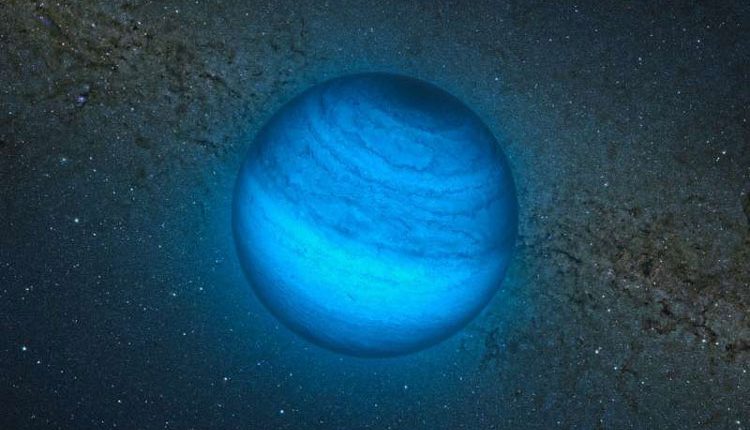Astronomers investigate mysterious object to reveal its true nature
A mysterious object designated CFBDSIR J214947.2-040308.9 (CFBDSIR 2149-0403 for short) has been recently investigated by an international team of astronomers led by Philippe Delorme of the Grenoble Alpes University in France in order to reveal its true nature. The object is assumed to be a young isolated planetary-mass object or a high-metallicity low-mass brown dwarf. The results of new observations published March 2nd in a paper on arXiv.org could help distinguish between these two classes.
CFBDSIR 2149-0403 was detected in 2012 by Delorme and his team as a possible member of the AB Doradus moving group. After its discovery, it was classified by the researchers as a unique T-type isolated planetary-mass candidate. However, due to the lack of convincing evidence supporting the hypothesis that CFBDSIR 2149-0403 formed as a planet and was subsequently ejected, the scientific community does not exclude the possibility that it could be a low-mass brown dwarf.
In order to to fully characterize CFBDSIR 2149-0403 and to constrain its nature, the team has conducted multi-instrument, multi-wavelength follow-up observations of this object. The list of instruments used by Delorme and his colleagues includes the Very Large Telescope’s (VLT) X-Shooter spectrograph and HAWK-I near-infrared imager, WIRCam imager at the Canada–France–Hawaii Telescope and NASA’s Spitzer Space Telescope.
“The X-Shooter data enabled a detailed study of the physical properties of this object. However, all the data presented in the paper is really necessary for the study, especially the follow-up to obtain the parallax of the object, as well as the Spitzer photometry. Together, they enable us to get the bolometric flux of the object, and hence constraints that are almost independent from atmosphere model assumptions,” Delorme told Phys.org.
Besides determining the object’s parallax, the follow-up observations also allowed the researchers to derive its six-dimensional position and kinematics. These results indicate that CFBDSIR 2149-0403 is most likely not a member of the AB Doradus moving group, as was claimed in earlier studies, thereby removing any strong independent constraint on its age.
“We now reject our initial hypothesis that CFBDSIR 2149-0403 would be a member of the AB Doradus moving group. This removes the most robust age constraint we had. Though determining that certainly improved our knowledge of the object it also made it more difficult to study, by adding age as a free parameter,” Delorme said.
The most important conclusion in the new study is that CFBDSIR 2149-0403 is most probably either a young (less than 500 million years) isolated planetary-mass (between two and 13 Jupiter masses) object of late-T spectral type, or an older (2 to 3 billion years old), metallicity-enhanced brown dwarf, with a mass ranging from two to 40 Jupiter masses. However, the scientists noted that our theoretical understanding of cool, low-gravity and/or metallicity-enhanced atmospheres is not yet robust enough to decisively conclude which hypothesis is true. This is because these physical parameters have very similar effects on the emergent spectra of such atmospheres.
“CFBDSIR 2149-0403 is an atypical substellar object that is either a ‘free-floating planet’ or a rare high-metallicity brown dwarf. Or a combination of both,” Delorme concluded.


Comments are closed, but trackbacks and pingbacks are open.